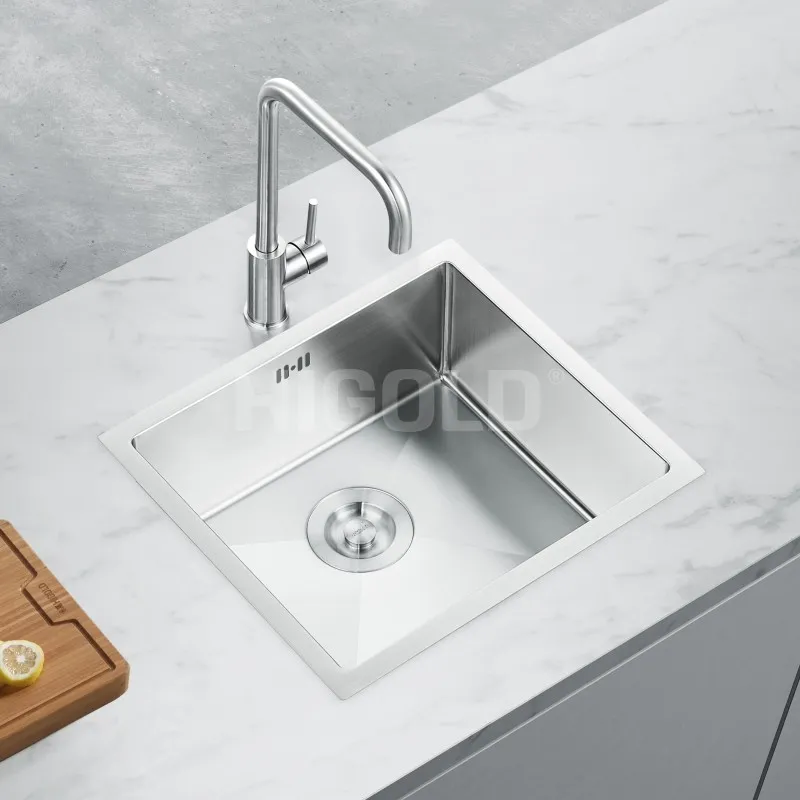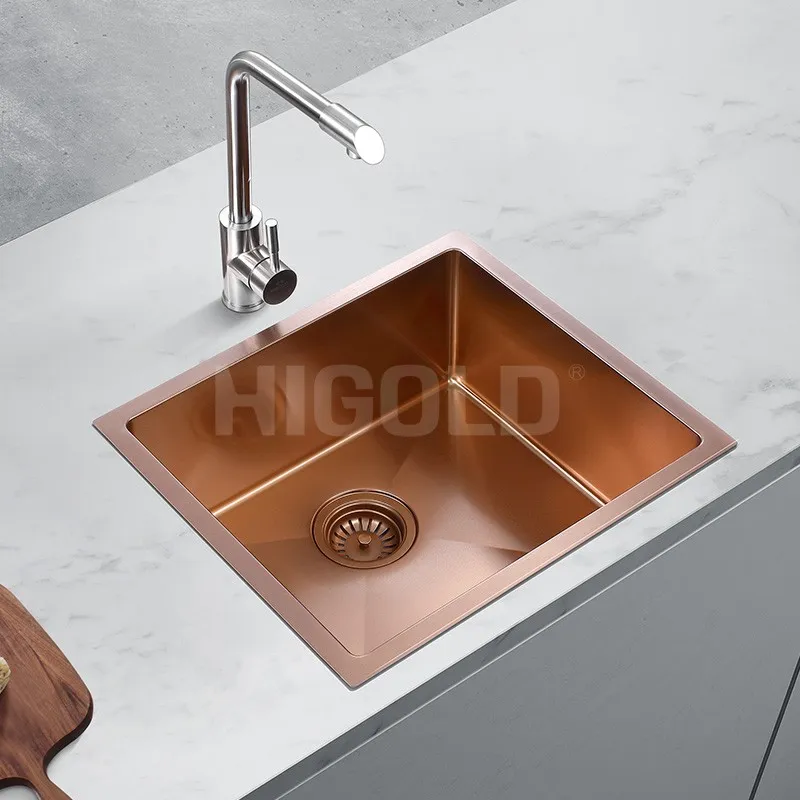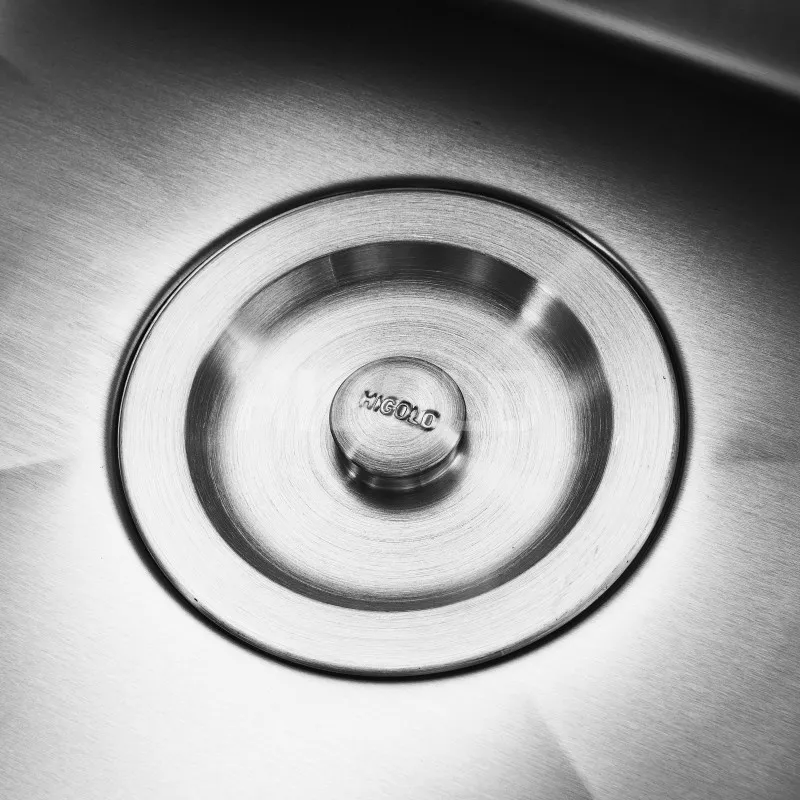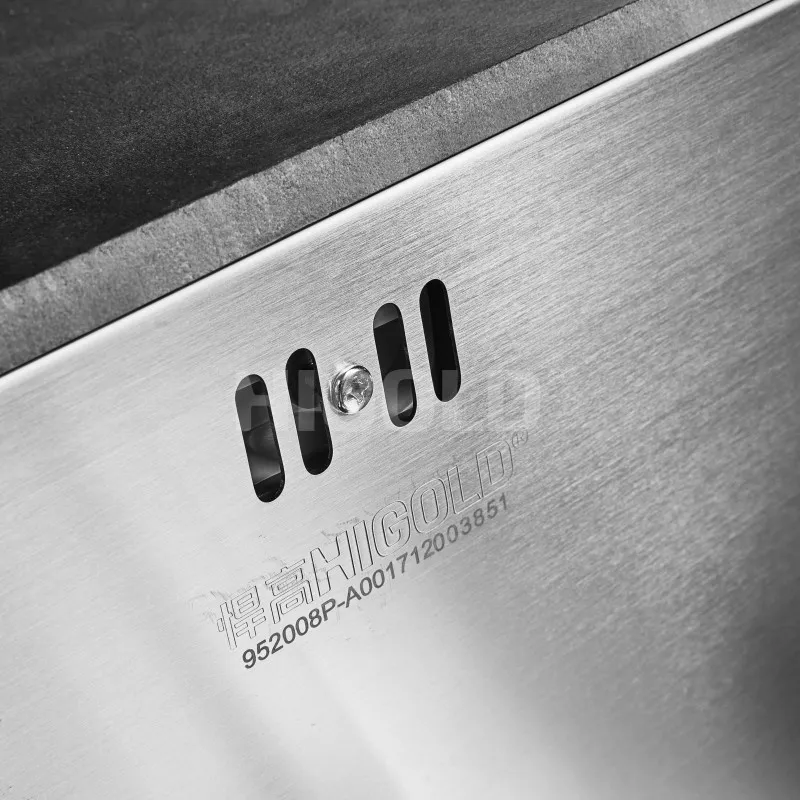As one of the most common kitchen appliances, sinks not only serve the purpose of washing food and dishes but also play a crucial role in kitchen aesthetics, functionality, and space utilization. As kitchen designs increasingly prioritize simplicity and practicality, undercounter sinks have become the preferred choice for many families.
Undercounter kitchen sinks differ from traditional top-mounted sinks in that their installation allows the sink rim to sit flush with the countertop, significantly improving the overall visual appeal and space efficiency.
However, many people choose undercounter sinks and discover that they don't include drains. Is this design rational? Why do most undercounter sinks lack drains? This article will explore this issue from multiple perspectives.

What is an undercounter sink?
An undercounter sink, also known as a sunken sink, is one where the rim is installed below the countertop, rather than above it. This design emphasizes cleanliness and aesthetics, and can visually enhance a kitchen's modern and stylish feel. Undermount sinks offer significant advantages. Not only do they increase the depth of the sink, making it easier to clean large appliances, but they also create a cleaner, more streamlined look on the countertop.
Undermount sinks require more precision to install than traditional top-mount sinks. The countertop and sink must be tightly connected to each other, otherwise water may leak under the sink, causing stains and unnecessary water damage. A tight seal during installation is crucial to ensure the longevity and functionality of the sink.
A key feature of undermount sinks is their cleanliness. Since there is no gap between the sink and the countertop, wastewater and food debris flow directly down the countertop into the sink, reducing the chance of food and water accumulation and making cleanup easier.

What is the function of a kitchen sink drain?
A drain is a kitchen sink accessory, primarily used to hold freshly washed dishes or food, allowing water to drain naturally, thus maintaining a clean countertop. Drains are typically angled to effectively direct water into the sink, preventing it from accumulating on the countertop.
Traditional sinks, especially top-mounted kitchen sinks, typically come with a drainboard. This is because top-mounted sinks typically leave some countertop space to accommodate an additional drainboard. In this type of sink design, a drainboard not only serves a practical function but also enhances the overall design. By placing washed dishes or ingredients on the drainboard, users can prevent food or water stains from dripping directly onto the countertop, making cleanup easier.
Drainboards are made from a variety of materials, including stainless steel, plastic, and silicone. These materials are chosen based on the sink's material and the overall style of the kitchen.

Why don't undercounter sinks come with drainboards?
Although drainboards are an essential feature in many kitchens, undercounter kitchen sinks typically lack them. To better understand this phenomenon, we need to analyze undercounter sinks from multiple perspectives, including their structural characteristics and usage requirements.
1. Considerations for Countertop Integration
One of the most prominent features of undercounter kitchen sinks is their seamless integration with the countertop. Undermount sinks are installed flush with the countertop, eliminating the exposed lip of traditional sinks. This creates a seamless connection between the countertop and sink, enhancing the overall aesthetic. This integrated design inherently embodies a clean and streamlined aesthetic. Placing a drainboard on the countertop would not only disrupt the integrated feel but also add to the appearance of clutter. Therefore, most undermount sinks opt for a drainboard-free design, maintaining a simple and aesthetically pleasing aesthetic.
2. Countertop Space Efficiency
Modern kitchen design increasingly prioritizes maximizing space utilization, especially in smaller kitchens, where the proper use of every inch is crucial. Undermount sinks are typically deeper than traditional sinks, accommodating larger volumes of water and wash items. To avoid taking up additional countertop space, many designers and users prefer undermount sinks without a drainboard. Drainboards themselves take up a significant amount of countertop space, and especially in smaller kitchens, adding a drainboard can make the countertop appear more crowded and cluttered.
3. Convenient Cleaning and Maintenance
The undermount kitchen sink design eliminates a gap between the sink and the countertop, making cleaning much easier. Traditionally, drainboards leave water stains and food debris on the countertop, especially near the sink, where dirt tends to accumulate. Removing the drainboard makes countertop cleaning much simpler. Users only need to wipe the countertop and sink regularly, without having to worry about cleaning the drainboard.
4. Different Usage Habits
In actual kitchen use, many people don't rely on drainboards to store dishes or ingredients. Many families simply place washed dishes on a clean countertop or dry them with a kitchen towel. Therefore, the function of a drainboard is not important to some users. Furthermore, modern kitchen designs often include appliances such as dishwashers and dish drying racks, further reducing the need for a drainboard.
5. Balancing Functionality and Aesthetics
For those who value a balance between functionality and aesthetics, removing the drainboard allows the sink to blend more harmoniously with other kitchen elements. Undermount kitchen sinks are inherently visually appealing. Paired with a simple faucet and countertop, they create a modern, stylish kitchen ambiance. However, adding a drainer can make the overall design appear overly cluttered and unnecessarily detract from the kitchen's aesthetics.

How to solve the problem of not having a drainer?
While undermount sinks lack drainers, users can still find other solutions. Here are a few viable alternatives:
1. Standalone Dish Drying Rack
Many people choose to use a dish drying rack as an alternative to a drainer, especially on the countertop. If space permits, a dish drying rack can serve as a dedicated area for freshly washed dishes. This prevents excessive water stains from accumulating on the countertop without altering the kitchen sink's design.
2. Compatible Draining Rack
While undermount kitchen sinks don't have drainers themselves, many removable draining racks are available on the market. Users can place the drainer next to the sink or directly inside it as needed. These racks are often flexible, allowing for convenient storage without obstructing the countertop's cleanliness.
3. Improved Sink Design
Some modern undercounter sinks have begun to take drainage needs into account, featuring built-in overflow channels or dedicated drains. These built-in features allow water to flow more efficiently into the kitchen sink, eliminating the need for a traditional drainboard.
4. Improve the water resistance of countertop materials
To prevent moisture accumulation on countertops, many kitchen designers recommend using water-resistant countertop materials, such as quartz and granite. These materials are inherently water-resistant, effectively reducing water stains and keeping countertops dry and tidy even without a drainboard.
Does Higold offer solutions for smart kitchens or intelligent fixtures?
Yes, Higold is investing in the development of intelligent kitchenware solutions. This includes sinks with integrated cutting boards and drainage systems, touchless faucets, and future-forward materials designed for modern kitchens. With a strong R&D foundation and experience in innovation, Higold aims to become a key supplier for smart kitchen products. Buyers looking to expand into the smart home market can explore custom options with Higold.


